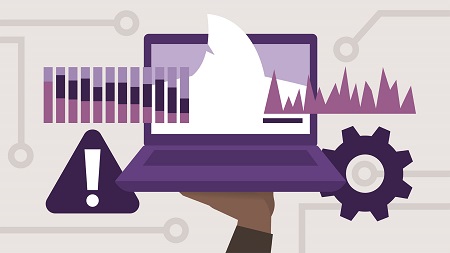
English | MP4 | AVC 1280×720 | AAC 48KHz 2ch | 1h 30m | 278 MB
Learn how to analyze network problems with Wireshark, a free, open-source packet analysis tool used by network administrators around the world. In this course, Lisa Bock demonstrates how to get the most out of Wireshark, so that you can better evaluate your network and keep traffic moving. You can discover how to use time as a metric for visualizing delays. In addition, you can get an introduction to some of the most helpful tools within Wireshark, such as TCP, I/O, and flow graphs. Finally, learn how to visualize transmission errors and recognize common attack signatures.
Topics include:
- Exploring Wireshark capture options
- Analyzing a capture
- Using time as a metric
- Viewing conversations and endpoints
- Creating flow and I/O graphs
- Graphing the TCP streams
- Protecting your network from packet sniffing
- Recognizing abnormal or malicious traffic
Table of Contents
1 Analyze network problems
2 What you need to know
3 Getting the most out of Wireshark
4 Navigating the Wireshark interface
5 Investigating the Edit menu choice
6 Exploring the View menu choice
7 Getting ready to capture
8 Examining a capture
9 Challenge Examining evidence of congestion
10 Solution Examining evidence of congestion
11 Displaying time
12 Viewing details and expert information
13 Graphing the TCP streams
14 Challenge Using time to view gaps in transmission
15 Solution Using time to view gaps in transmission
16 Viewing conversations and endpoints
17 Creating a flow graph
18 Plot an I O graph
19 Challenge Using a flow graph
20 Solution Using a flow graph
21 Troubleshooting the network
22 Spotting an ARP storm
23 Identifying bursty traffic
24 Protecting from packet sniffing
25 Examining macof attacks
26 Challenge Viewing unencrypted traffic
27 Solution Viewing unencrypted traffic
28 What’s next
Resolve the captcha to access the links!